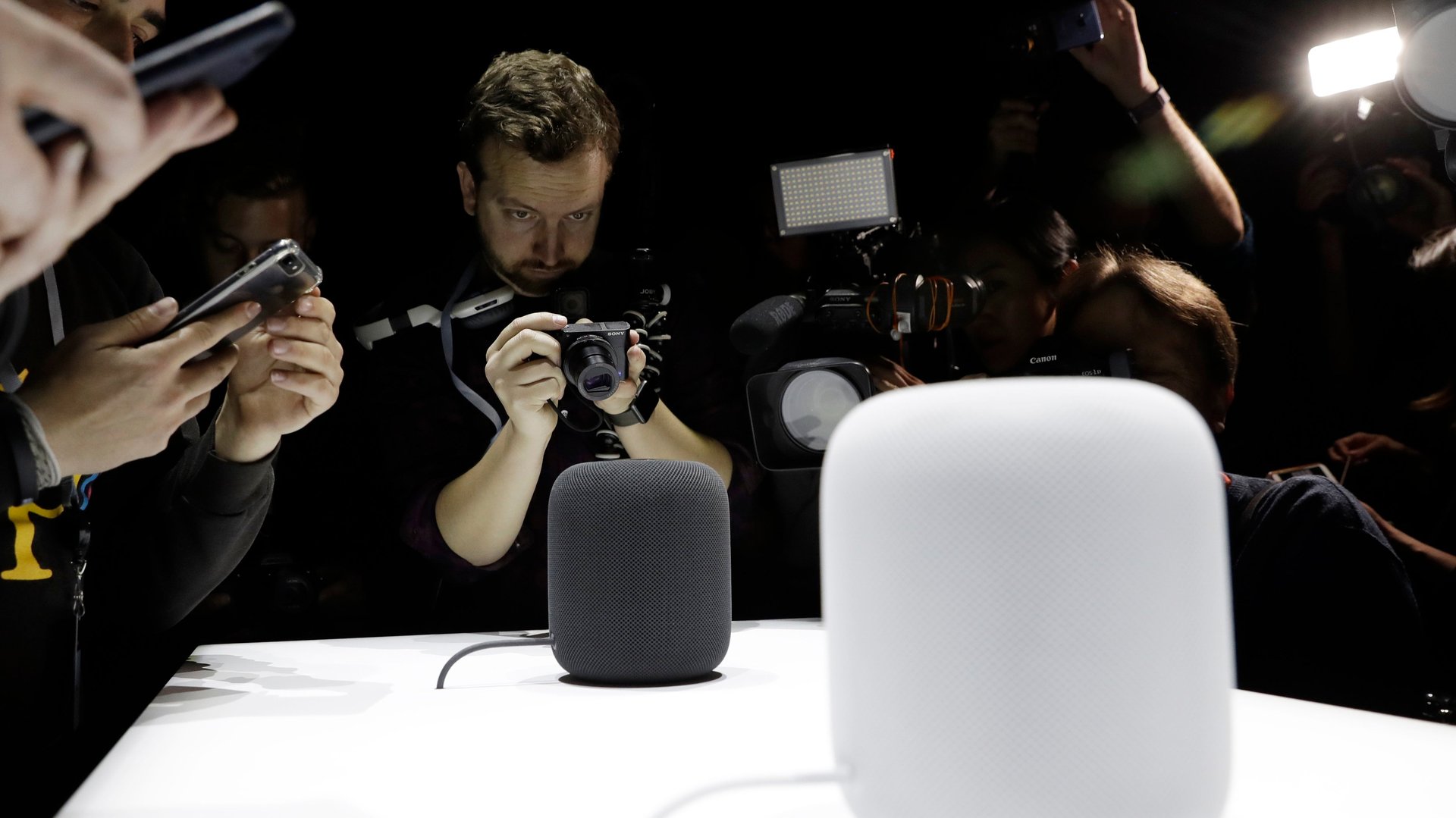The Bose Wave Radio was the original HomePod
Reviews of Apple’s latest gadget, the $350 HomePod music player, dropped today (Feb. 6). The smart speaker is due to ship to customers Feb. 9, and it seems that the initial takes were generally pretty mixed. While many reviewers agreed that the HomePod’s sound quality was better than most of its competitors, few saw the Siri integrations making the speaker much more useful than just buying a nice speaker and using your iPhone.


Reviews of Apple’s latest gadget, the $350 HomePod music player, dropped today (Feb. 6). The smart speaker is due to ship to customers Feb. 9, and it seems that the initial takes were generally pretty mixed. While many reviewers agreed that the HomePod’s sound quality was better than most of its competitors, few saw the Siri integrations making the speaker much more useful than just buying a nice speaker and using your iPhone.
One line in Nilay Patel’s review for The Verge stood out to me. Apple reportedly told him that it holds around 200 patents for various parts of the HomePod, and that the company banged out about its superior “beamforming” technology for shaping the way sound is emitted from the device to fill a room of any size.
Then it hit me. The HomePod is basically a Bose Wave Radio for our times.
For the uninitiated: Before Bose made very nice headphones and Bluetooth speakers, it was the king of gadget informercials. It sold the original Bose Acoustic Wave stereo system in the 1990s, a hulking white monstrosity that incorporated a tape deck and a radio and was supposed to be able to fill any room with sound.
Then it miniaturized the entire system, ditched the tape deck, and called it the Bose Wave Radio. It debuted in 1993 and cost $349—the same price as a HomePod does today—which is about $600 in today’s dollars. In a story in Popular Science at the time, Bose highlighted that it used a “sinous acoustic waveguide” inside the system to produce such a big sound in a tiny package. That might be even harder for the average person to decipher than “beamforming.”
Later in the ’90s, Bose included a CD player in the Wave Radio, and the device could be seen on countertops and in the dens of grandparents and others easily swayed by infomercials across the land.
Apple often describes its products as “magical” or a “breakthrough.” But sometimes, they’re just old ideas wrapped in nicer marketing. And aluminum.